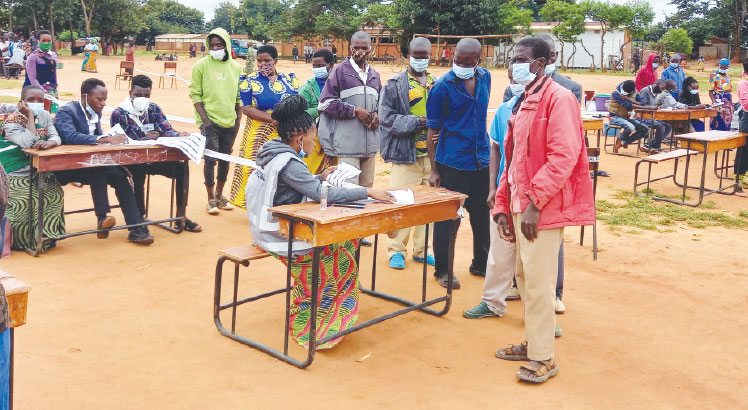Quota fighters have a dinosaur to fight
There has been no genuine effort by any government to end the quota system which was first introduced in 1987. Under the policy, as first implemented, each district was to have 10 guaranteed spaces in the University of Malawi (Unima) and the balance of the spaces were shared amongst all the districts in proportion to their population sizes.
Under the policy, where a given district fails to meet its quota, the unfilled spaces were allocated to those districts in that district’s region which produced adequate numbers of academically qualified candidates.
The policy remained in force until 1993, when protestations against the system could only be expressed in hushed tones. At that time, no one could openly challenge a government policy as it would have been construed as a direct challenge of Kamuzu’s entrenched 31-year-old authoritarian regime. The price to pay for such would have been too high. But as the ancient pre-Socratic Greek philosopher Heraclitus of Ephesus adage says: all is flux.
By 1992, winds of political change had started blowing across much of Africa to do away with authoritarian rule and poor human rights observance, promoting multiparty democracy. Malawi was not spared. Bolstered by donor aid cut in that year, the one party regime acceded to calls for a referendum about whether the country should remain a one-party state or adopt a multiparty system of government. As they say, the rest is history.
Riding on the popularity of democracy and its attendant freedoms, in 1993, some Malawians publicly and for the first time challenged the quota system in court. The High Court of Malawi, in the same year, ruled in a case involving Mhango and others v University Council of Malawi against basing university selection on district Quota other than on merit. The petitioners had argued that the system was discriminatory and of no solid foundation.
But if Kamuzu’s regime introduced the quota system, Bingu wa Mutharika’s administration re-introduced it albeit coached in a slightly sugar quoted language. In 2007, Unima Council introduced what it termed the Equitable system for admission into public universities. Under the system, Unima Council passed a resolution which makes a distinction between students on full government scholarship and non-residential students. In essence, this was the coming back, and in full force, of the same Quota system effective 2008 which the Court had abolished.
The rationale for the policy shift was that selection to public universities had been disproportionate as fewer students were being selected to public universities from some districts than others. And when some Malawians protested against the re-introduction of the system, the more liberal Unima Senate determined that such a policy shift required thorough consultation.
However, Unima Council noted that arguments for or against quota may have just been impressionistic. It, therefore, requested the Centre for Education Research and Training (Cert) to conduct a comprehensive study to confirm or trash the impressions.
But 12 years down the line, Cert has not conducted the said study. Cert, an agency of the Malawi Government under Unima is dependent on Unima or government for funding. If Government was keen to conduct the study it would have funded Cert to carry out the study. That this has not happened is because government does not want Cert to conduct the study. We can only surmise that the ruling regimes since 2008 have all been comfortable with the Quota system disguised as the Equitable System of selecting students to public universities.
Unfortunately, the system is not limited to selection of students to universities only. It also applies to the whole public education sector—including selection to secondary and all other tertiary institutions.
But now there is more to be afraid of. For those fighting or against the quota system, they now have a dinosaur on their hands to deal with—gargantuan and intractable. How can one explain the selection of 17 000 pupils to secondary schools on second selection? Either there is something behind the scenes the Ministry of Education is doing or the whole process of selecting students to secondary school is too messy to be relied upon. No system of placing students in secondary school can leave out 17 000 students during the first selection and claim to be credible.
I, therefore, beg to move that after the Ministry of Education announced it had done away with the Quota system, the selection of 17 000 students under second selection disguised as merit based, be peremptorily accepted as indisputable evidence of the devil incarnate in Quota system.
Government should come clear about how two districts—Phalombe and Mulanje could sweep almost 90 percent of places in national secondary schools. There is a problem and at the root of this problem is lack of transparency—on passing rates for both PLSCE and MSCE.
To rule out suspicions that results of some schools or districts are manipulated, those fighting the quota system like the Quota Must Fall Movement (QMFM) and my friends at the Livingstonia Synod should fight for more transparency in the allocation of grades and selection to secondary and university. Evil as the Quota system is, those with powers to end it are compromised because they are benefitting from it. And those fighting the system have a mountain to climb but it is climbable. All is flux. Change is the only constant in life. Happy New Year to you all.



